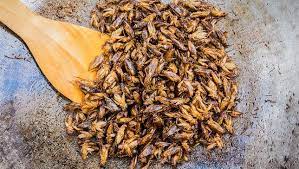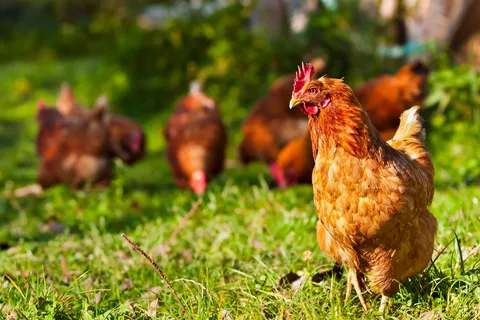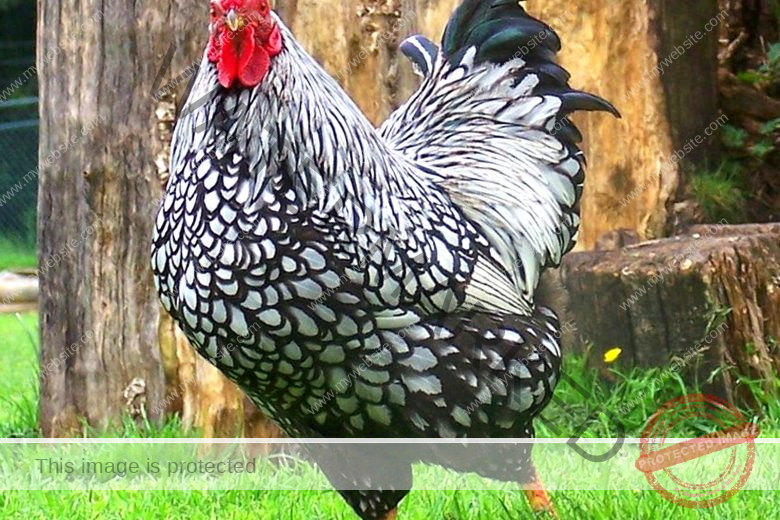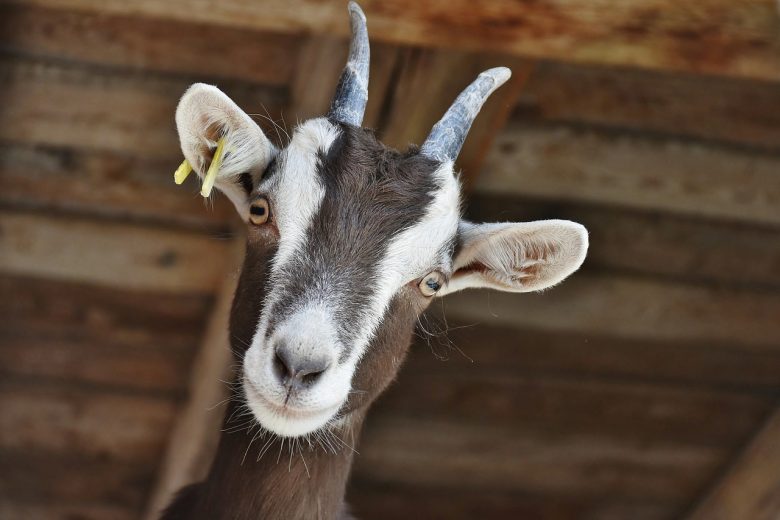Cricket farming in South Africa is a growing industry with increasing demand for crickets as a sustainable food source and as feed for reptiles.
Starting a cricket farm in South Africa requires careful planning, investment in equipment and infrastructure, and a solid understanding of the market and the industry.
It is important to research the market, the costs involved, and the regulations and laws surrounding cricket farming in South Africa. Before starting a cricket farm, it is important to have a clear understanding of the steps involved and to seek the help of experienced professionals.
With the growing demand for crickets, now is a great time to start a cricket farm in South Africa.
How to Start Cricket Farming in South Africa
Straightway, read below the step-by-step guide on how you can start cricket farming in South Africa.
Step 1: Research on the Basics of Cricket Farming
Before starting a cricket farm, it is important to research the basics of cricket farming. This will help in understanding the industry, its market, and the requirements for starting and running a cricket farm.
Read Also: How to Start Bee Farming in South Africa [Practical Guide]
Cricket farming requires proper knowledge of cricket biology, nutrition, and behavior.
It is important to know the life cycle of crickets, what they eat, and how to take care of them. Likewise, you need to understand the market demand for crickets, the prices of crickets, and the various end-use applications of crickets such as pet food, human consumption, and others.
Step 2: Identify a Suitable Location
The next step in starting a cricket farm is to identify a suitable location. The location should be convenient, have access to resources such as water and electricity, and be accessible to the market.
The following are some of the important factors to consider in choosing a suitable location for cricket farming in South Africa:
Read Also: [Beginners Guide] How To Start Snail Farming In South Africa
- Climate: South Africa has a warm climate, which is ideal for cricket farming. Crickets thrive in warm and humid environments, so it is important to choose a location that is conducive for them.
- Space: Cricket farming requires a significant amount of space for the farm, for storage, and for processing. It is important to choose a location that provides enough space for the cricket farm to operate efficiently.
- Access To Resources: Cricket farming requires access to water, electricity, and other resources for the farm to operate efficiently. It is important to choose a location that is accessible to these resources.
- Proximity To Market: It is important to choose a location that is close to the market where the crickets will be sold. This will reduce the transportation costs and make it easier to sell the crickets.
Step 3: Obtain Necessary Permits and Licenses in South Africa
Starting a cricket farm requires obtaining various permits and licenses. It is important to research and understand the regulations and requirements for obtaining these permits and licenses in South Africa.
Read Also: [Beginners Guide] How To Start Quail Farming In South Africa
Some of the important permits and licenses required are:
- Business license: A business license is required to start a cricket farm in South Africa.
- Food safety and sanitation license: Cricket farming involves food production, so it is important to obtain a food safety and sanitation license to ensure that the crickets are safe for consumption.
- Environmental permit: It is important to obtain an environmental permit to ensure that the cricket farm is operating within the guidelines and regulations set by the South African government.
Step 4: Construct or Purchase Cricket Farm
Once the location and permits have been secured, the next step is to construct or purchase a cricket farm.
There are two main types of cricket houses that can be used for cricket farming:
Read Also: [Beginners Guide] How To Start Ostrich Farming In South Africa
Traditional cricket house
A traditional cricket house is a simple structure that provides a warm and humid environment for the crickets to thrive such as a cricket pen or box, plastic container housing, and screen or mesh housing.
Controlled environment cricket house
A controlled environment cricket house is a more sophisticated structure that provides a controlled environment for the crickets. It allows for temperature, humidity, and lighting to be controlled, which is important for cricket farming.
Step 5: Purchase Equipment and Supplies for Cricket Farming
Once you have decided on the location for your cricket farm and have the necessary permits and licenses, the next step is to purchase the equipment and supplies you need to start your business.
Read Also: How To Start Pig Farming In South Africa [Step By Step Guide]
There are several essential items that you need to purchase to set up a cricket farm. These include:
Cricket Cages Or Containers
These will be used to house your crickets, so they are an essential part of your equipment. You can purchase cricket cages or containers in various sizes and materials, including plastic, mesh, and wire. Choose a material that will be durable and long-lasting, but also easy to clean and maintain.
Substrate
Crickets need a soft surface to rest and move around on. You can use peat moss, coconut coir, or vermiculite as your substrate.
Lighting
Lighting is an important factor for crickets as it helps regulate their circadian rhythms and provides them with the energy they need to grow. You will need to purchase UVB lights, heat lamps, and full-spectrum lights.
Read Also: How To Start Fish Farming In South Africa [Beginners Guide PDF]
Feeding Trays And Feed
Crickets need a variety of food sources to thrive, including fresh vegetables, grains, and insect feed. You will need to purchase feeding trays and enough food to sustain your crickets for a few weeks.
https://www.youtube.com/watch?v=9K-RNFfOrfM
Watering System
Crickets need a source of fresh water to drink. You can purchase a watering system that will allow you to water your crickets automatically or manually.
Humidity And Temperature Control
Crickets are very sensitive to changes in temperature and humidity, so it is essential to maintain stable conditions in your cricket farm. You can purchase a humidity and temperature control system that will help you monitor and maintain the right conditions for your crickets.
Step 6: Purchase Suitable Cricket Species
When selecting the species of cricket to farm, there are several factors to consider:
- Hardiness: Some species of crickets are more hardy and easier to care for than others. Choose a species that is easy to care for and less prone to disease.
- Growth Rate: Some species of crickets grow faster than others, so choose a species that will grow quickly so that you can harvest your crickets sooner.
- Feed Conversion Rate: Some species of crickets are more efficient at converting food into body mass, so choose a species that has a high feed conversion rate to maximize your profits.
- Market Demand: Consider the market demand for crickets in your area and choose a species that is in high demand.
In South Africa, the most common species of cricket to farm is the Black Field Cricket (Gryllus pennsylvanicus). This species is hardy, grows quickly, and has a high feed conversion rate, making it an ideal choice for a cricket farm in South Africa.
Step 7: Stock and Raise Crickets
Once you have your equipment and supplies, you can start to populate your cricket farm. You can purchase crickets from a local pet store or online supplier.
When you receive your crickets, place them in their cages and provide them with food, water, and a suitable substrate.
As your crickets grow, you will need to monitor their health and well-being. You should check the temperature and humidity levels regularly and make any necessary adjustments.
You should also check the food and water supplies daily to make sure that your crickets have enough to eat and drink.
Step 8: Cricket Farming Management
In cricket farming management involves ensuring the optimal growth and survival of the crickets. This includes providing them with proper nutrition through appropriate feeding and watering.
Pest and disease control is also important to prevent any outbreaks that may harm the crickets. Also, protection against predators such as birds and other insects is crucial.
Maintaining farm hygiene is also important to ensure that the environment remains clean and free from any contaminants. This includes regularly cleaning the containers, providing clean bedding, and monitoring the temperature and humidity levels.
Effective cricket farming management requires continuous monitoring and adjustments to ensure the health and well-being of the crickets.
Step 9: Cricket Breeding
Cricket breeding is an important step in establishing a sustainable cricket farm. The breeding process involves selecting healthy and strong crickets, providing them with optimal conditions for growth and reproduction, and monitoring their progress.
The first step in breeding crickets is selecting a suitable container for them to live in. This container should be large enough to accommodate the crickets and have proper ventilation to allow for air flow.
A substrate, such as coconut coir or vermiculite, is added to the container to provide a place for the crickets to lay their eggs.
Next, the temperature, humidity, and light conditions must be optimized for the crickets.
A temperature of around 80°F and a relative humidity of 70% is ideal for cricket breeding. Adequate light, such as a fluorescent bulb, should also be provided to encourage mating and egg-laying.
The crickets are then fed a diet of dry grains, vegetables, and fruits to provide them with the necessary nutrients for growth and reproduction. A water source, such as a wet sponge, should also be provided.
Step 10: Harvest Crickets
Once the crickets have reached maturity and have laid eggs, it is time to harvest them. The eggs are removed from the container and incubated until they hatch into nymphs.
These nymphs will grow into adult crickets in a few weeks, and the process can then be repeated.
The adult crickets can be harvested by hand or by using a vacuum cleaner. They are then packaged and sold as a food source for reptiles, birds, and other animals.
The entire process, from breeding to harvest, can be repeated several times a year to ensure a continuous supply of crickets for your customers.
The Cost of Establishing a Cricket Farm in South Africa
The cost of establishing a cricket farm depends on various factors such as the size of the farm, the location, and the type of infrastructure that needs to be built. On average, the cost of establishing a small-scale cricket farm in South Africa ranges from ZAR 25,000 to ZAR 50,000.
Where to Sell Crickets in South Africa
There are a number of places to sell crickets in South Africa, including pet stores, pet supply stores, and reptile shops.
Some large pet stores even sell crickets online, making it easier for customers to purchase them from the comfort of their own homes.
You can also sell crickets directly to consumers through local farmers markets or online platforms such as Facebook Marketplace or Gumtree.
Another option is to sell crickets to zoos, aquariums, or other wildlife parks. These institutions often require a large quantity of crickets to feed their reptiles, birds, and other animals. By establishing a relationship with these institutions, you can secure a steady stream of business.
Pros of Cricket Farming in South Africa
- Low start-up costs: Cricket farming is a relatively low-cost business to start, making it accessible to individuals with limited financial resources.
- High demand: With the growing popularity of cricket as a sustainable and healthy source of protein, the demand for crickets is increasing globally.
- Low environmental impact: Cricket farming has a low environmental impact, as crickets are efficient feed converters and produce very little waste.
- Versatile product: Crickets can be used in a variety of products, including pet food, protein bars, and even as a food source for humans.
- Space efficient: Cricket farming requires a small amount of space compared to other livestock, making it ideal for urban areas.
Challenges of Cricket Farming in South Africa
- Permits and regulations: Cricket farming is regulated by the government, which means that you will need to obtain permits and follow strict regulations to operate your farm.
- High humidity: Crickets require high humidity levels to thrive, which can be a challenge to maintain in South Africa’s arid climate.
- Competition: Cricket farming is a growing industry, which means that there is increasing competition in the market.
- Pest and disease control: Cricket farming requires strict pest and disease control measures to ensure the health and wellbeing of the crickets.
- Marketing and sales: Cricket farming requires effective marketing and sales strategies to reach potential customers and increase revenue.
Market and Industries that Demand Cricket South Africa
The market for crickets in South Africa is growing, with a growing demand for sustainable and healthy sources of protein.
Cricket farming has the potential to supply the pet food industry, as well as industries that are looking for alternative sources of protein for human consumption, such as the food and beverage industry.
Additionally, cricket farming has the potential to supply the reptile and bird industry, which requires a steady supply of crickets to feed their animals.
Small Scale Cricket Farming
Small scale cricket farming refers to the production of crickets on a smaller scale, usually for personal use or for sale to local pet stores and farmers markets.
It can be a low-cost business opportunity, as it requires a small amount of space and equipment.
Cricket farming on a small scale is ideal for individuals who want to get started in the industry without investing a large amount of money.
Commercial Cricket Farming
Commercial cricket farming involves producing crickets on a larger scale for sale to a wider market, such as pet stores, zoos, and wildlife parks.
It requires a larger investment in equipment and infrastructure, but has the potential for greater returns.
Commercial cricket farming also requires a larger workforce and a more complex management system, as well as a greater understanding of the industry.
Cricket Farming PDF
Cricket farming PDFs provide information on everything you need to know to get started in cricket farming, including the costs involved, equipment needed, and the steps to take to establish a successful cricket farm.
These PDFs are a great resource for individuals who are interested in starting a cricket farm, as they provide detailed information on the industry and the steps involved in setting up a farm.
Is Cricket Farming Profitable
Cricket farming has the potential to be a profitable business, as the demand for crickets is increasing globally.
The profitability of cricket farming depends on several factors, including the size of the farm, the quality of the crickets, and the demand for crickets in the market.
Effective marketing and sales strategies are also important for increasing revenue and ensuring the profitability of the farm.
Efficient management and strict control of pests and diseases are crucial for the success of the farm.
Overall, cricket farming can be a profitable business opportunity for individuals who are willing to invest time and resources into the industry.
Cricket Farming at Home
Cricket farming at home is a great way for individuals to get started in the industry without investing a large amount of money.
It is a low-cost business opportunity, as it requires a small amount of space and equipment.
Cricket farming at home is ideal for individuals who want to produce crickets for personal use or for sale to local pet stores and farmers markets.
Cricket farming at home provides individuals with the opportunity to learn about the industry and gain valuable experience before starting a larger commercial operation.
Cricket Farmer Salary
The salary of a cricket farmer varies depending on the size of the farm and the level of experience of the farmer.
A cricket farmer who runs a small-scale operation may earn a modest salary, while a commercial cricket farmer with a larger operation may earn a higher salary.
Cricket farmers who have experience in the industry and who have established a successful operation are likely to earn a higher salary.
Cricket Farming for Food
Cricket farming for food is a growing industry, as crickets are a high-protein and sustainable food source. Cricket flour and cricket protein bars are becoming increasingly popular as people seek out alternative protein sources.
Cricket farming for food requires a different approach than traditional cricket farming, as the focus is on producing high-quality crickets for human consumption.
The quality of the crickets, including their diet and living conditions, is crucial for the success of the operation.
How To Start a Cricket Farm For Reptiles
Starting a cricket farm for reptiles involves several steps, including setting up the farm, obtaining the necessary equipment, and sourcing the crickets.
A successful cricket farm for reptiles requires a controlled environment that is free from pests and diseases.
It is also important to have a good understanding of the needs of reptiles and the type of crickets they require.
The most important factor in starting a cricket farm for reptiles is to have a clear understanding of the market and the demand for crickets.
A successful cricket farm for reptiles requires effective marketing and sales strategies, as well as efficient management practices.
Additionally, it is important to have a solid business plan and to carefully consider the costs involved before starting a cricket farm for reptiles.
Conclusion
Starting a cricket farm in South Africa requires careful planning, understanding of the market and demand, investment in equipment and infrastructure, and efficient management practices. It is important to research and educate oneself on the industry and to seek the help of experienced professionals.
Cricket farming can be a profitable business opportunity in South Africa if executed correctly. With the growing demand for crickets, now is the perfect time to start a cricket farm in South Africa.





